Sriram Rajamani
Frustrated with Code Quality Issues? LLMs can Help!
Sep 22, 2023Abstract:As software projects progress, quality of code assumes paramount importance as it affects reliability, maintainability and security of software. For this reason, static analysis tools are used in developer workflows to flag code quality issues. However, developers need to spend extra efforts to revise their code to improve code quality based on the tool findings. In this work, we investigate the use of (instruction-following) large language models (LLMs) to assist developers in revising code to resolve code quality issues. We present a tool, CORE (short for COde REvisions), architected using a pair of LLMs organized as a duo comprised of a proposer and a ranker. Providers of static analysis tools recommend ways to mitigate the tool warnings and developers follow them to revise their code. The \emph{proposer LLM} of CORE takes the same set of recommendations and applies them to generate candidate code revisions. The candidates which pass the static quality checks are retained. However, the LLM may introduce subtle, unintended functionality changes which may go un-detected by the static analysis. The \emph{ranker LLM} evaluates the changes made by the proposer using a rubric that closely follows the acceptance criteria that a developer would enforce. CORE uses the scores assigned by the ranker LLM to rank the candidate revisions before presenting them to the developer. CORE could revise 59.2% Python files (across 52 quality checks) so that they pass scrutiny by both a tool and a human reviewer. The ranker LLM is able to reduce false positives by 25.8% in these cases. CORE produced revisions that passed the static analysis tool in 76.8% Java files (across 10 quality checks) comparable to 78.3% of a specialized program repair tool, with significantly much less engineering efforts.
Landmarks and Regions: A Robust Approach to Data Extraction
Apr 11, 2022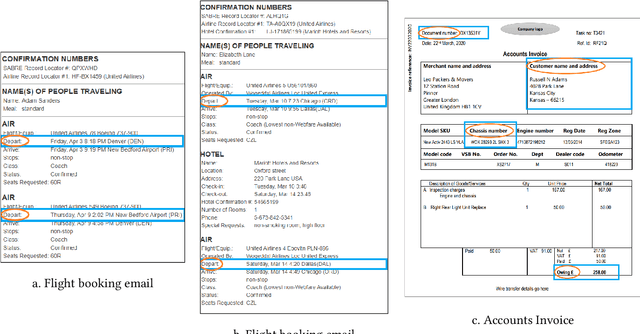
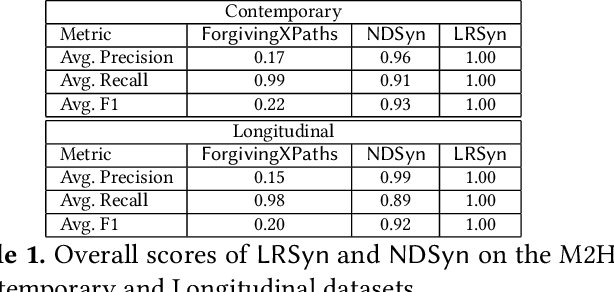
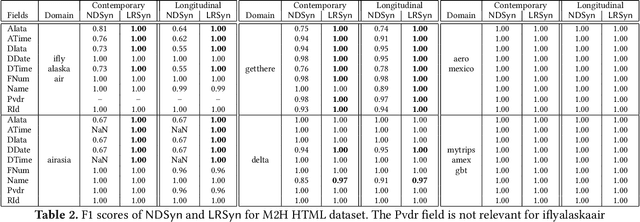
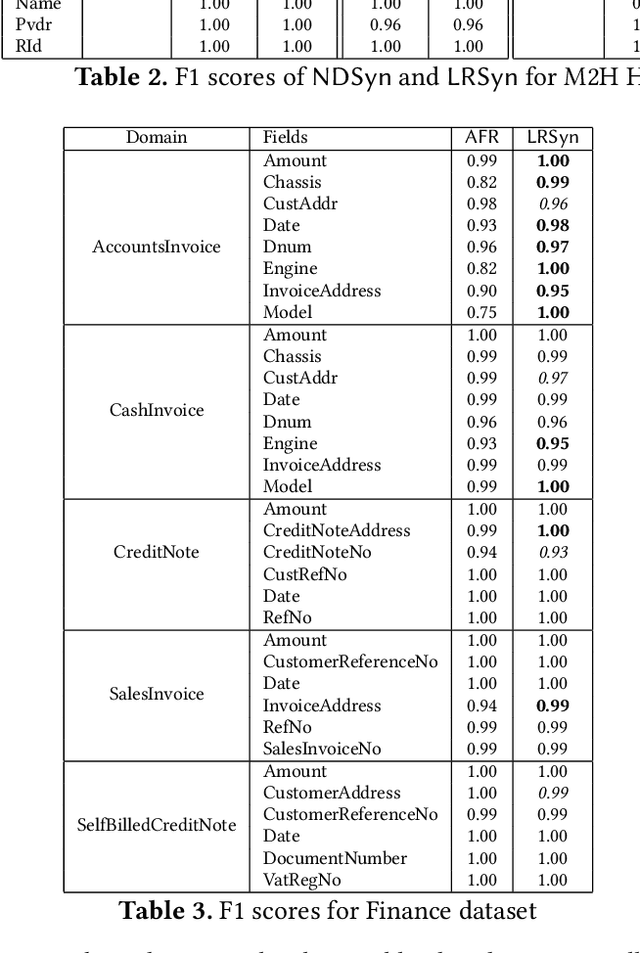
Abstract:We propose a new approach to extracting data items or field values from semi-structured documents. Examples of such problems include extracting passenger name, departure time and departure airport from a travel itinerary, or extracting price of an item from a purchase receipt. Traditional approaches to data extraction use machine learning or program synthesis to process the whole document to extract the desired fields. Such approaches are not robust to format changes in the document, and the extraction process typically fails even if changes are made to parts of the document that are unrelated to the desired fields of interest. We propose a new approach to data extraction based on the concepts of landmarks and regions. Humans routinely use landmarks in manual processing of documents to zoom in and focus their attention on small regions of interest in the document. Inspired by this human intuition, we use the notion of landmarks in program synthesis to automatically synthesize extraction programs that first extract a small region of interest, and then automatically extract the desired value from the region in a subsequent step. We have implemented our landmark-based extraction approach in a tool LRSyn, and show extensive evaluation on documents in HTML as well as scanned images of invoices and receipts. Our results show that our approach is robust to various types of format changes that routinely happen in real-world settings.
Programming by Rewards
Jul 14, 2020



Abstract:We formalize and study ``programming by rewards'' (PBR), a new approach for specifying and synthesizing subroutines for optimizing some quantitative metric such as performance, resource utilization, or correctness over a benchmark. A PBR specification consists of (1) input features $x$, and (2) a reward function $r$, modeled as a black-box component (which we can only run), that assigns a reward for each execution. The goal of the synthesizer is to synthesize a "decision function" $f$ which transforms the features to a decision value for the black-box component so as to maximize the expected reward $E[r \circ f (x)]$ for executing decisions $f(x)$ for various values of $x$. We consider a space of decision functions in a DSL of loop-free if-then-else programs, which can branch on linear functions of the input features in a tree-structure and compute a linear function of the inputs in the leaves of the tree. We find that this DSL captures decision functions that are manually written in practice by programmers. Our technical contribution is the use of continuous-optimization techniques to perform synthesis of such decision functions as if-then-else programs. We also show that the framework is theoretically-founded ---in cases when the rewards satisfy nice properties, the synthesized code is optimal in a precise sense. We have leveraged PBR to synthesize non-trivial decision functions related to search and ranking heuristics in the PROSE codebase (an industrial strength program synthesis framework) and achieve competitive results to manually written procedures over multiple man years of tuning. We present empirical evaluation against other baseline techniques over real-world case studies (including PROSE) as well on simple synthetic benchmarks.
Debugging Machine Learning Tasks
Mar 23, 2016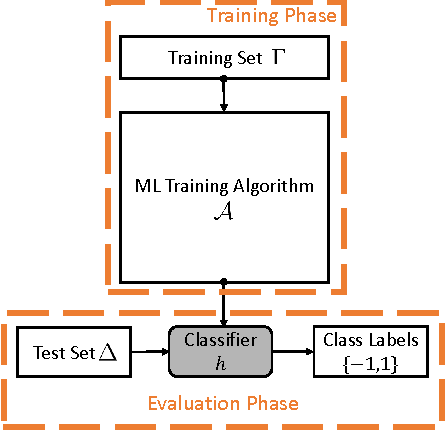

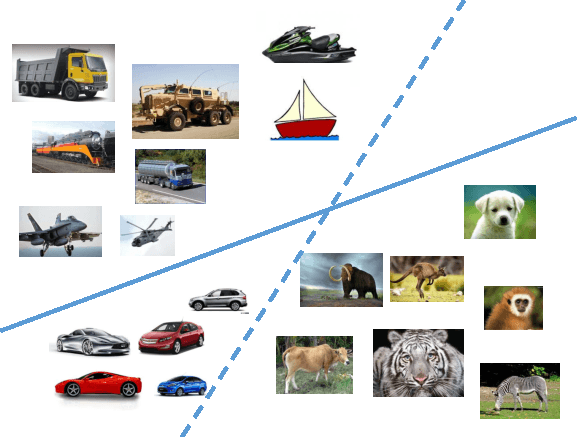

Abstract:Unlike traditional programs (such as operating systems or word processors) which have large amounts of code, machine learning tasks use programs with relatively small amounts of code (written in machine learning libraries), but voluminous amounts of data. Just like developers of traditional programs debug errors in their code, developers of machine learning tasks debug and fix errors in their data. However, algorithms and tools for debugging and fixing errors in data are less common, when compared to their counterparts for detecting and fixing errors in code. In this paper, we consider classification tasks where errors in training data lead to misclassifications in test points, and propose an automated method to find the root causes of such misclassifications. Our root cause analysis is based on Pearl's theory of causation, and uses Pearl's PS (Probability of Sufficiency) as a scoring metric. Our implementation, Psi, encodes the computation of PS as a probabilistic program, and uses recent work on probabilistic programs and transformations on probabilistic programs (along with gray-box models of machine learning algorithms) to efficiently compute PS. Psi is able to identify root causes of data errors in interesting data sets.
 Add to Chrome
Add to Chrome Add to Firefox
Add to Firefox Add to Edge
Add to Edge